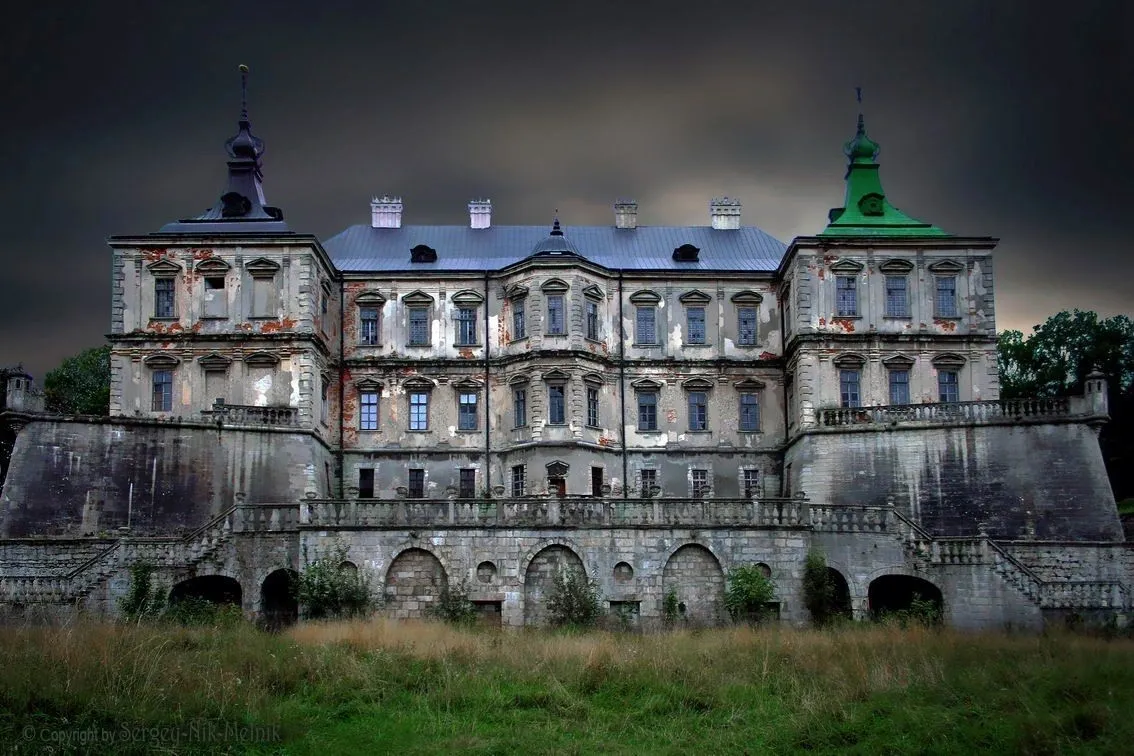Nestled in the picturesque countryside near L’viv, Ukraine, Pidhirtsi Castle stands as a captivating yet somewhat overlooked treasure. Its grandeur beckons visitors, inviting them to unravel the mysteries of the “Woman in White” and explore the echoes of its storied past. From opulent royal gatherings to devastating raids and fires, Pidhirtsi Castle has borne witness to a tumultuous history, much like the nation it represents. Yet, through the passage of time, it remains steadfast, a symbol of endurance and resilience for future generations to admire.
Regarded as one of the most magnificent palace-castle complexes in the region, Pidhirtsi Castle was conceived by Italian architect Andrea dell’Aqua and a French-Polish architect in the 17th century. Constructed between 1635 and 1640 for the Hetman of the Polish-Lithuanian Crown, it was intended more as a sumptuous retreat than a formidable fortress, resembling a palace in its opulence. Throughout the 18th century, Polish royalty utilized it as a venue for leisure and extravagant festivities, adding to its allure and prestige.


During its golden age, Pidhirtsi Castle was renowned for its opulent interiors adorned with priceless artwork, each hall named after the colors or collections it housed. The estate was a hub of extravagant banquets and festivities, often spanning days or even weeks. However, the castle’s original splendor has largely faded into memory.
Before the arrival of the Red Army in 1939, the castle’s last owner, Roman Vladyslav Sanhushko, transported many of its precious artifacts abroad, leaving behind a diminished legacy. Years of neglect and damage have transformed Pidhirtsi Castle into a mere shadow of its former self, crying out for restoration and rejuvenation.
While the castle underwent several renovations in the 18th and 19th centuries, the 20th century brought about its most significant challenges. The Polish-Soviet War of 1919-1921 left the structure extensively vandalized. Following World War II and the annexation of the area from Poland to Ukraine, the castle served as a tuberculosis sanatorium, further accelerating its decay. A devastating fire in 1956 dealt a final blow to its already weakened state.
Since 1991, the Museum of Fine Arts in L’viv has taken on the responsibility of overseeing what little remains of the castle and its sparse art collection. The decaying ruins of Pidhirtsi Castle stand as a poignant testament to its tumultuous history, reminding us of the fleeting nature of grandeur and the importance of preserving our cultural heritage.


Throughout its storied past, Pidhirtsi Castle has played many roles, yet its reputation as a haunted fortress often steals the spotlight. Legends of the “Woman in White” abound, captivating thrill-seekers and those fascinated by the supernatural. These tales typically center around a woman believed to be Maria Zhevuska, the wife of Duke Zhevuski.
According to local lore, Duke Zhevuski sealed Maria within the castle’s walls in a fit of rage, either due to suspicions of infidelity or her inability to bear an heir. Some versions of the story even suggest that he bound her spirit to the castle for eternity. These chilling rumors have cemented Pidhirtsi Castle’s status as a haunted hotspot.
With such eerie legends fueling its notoriety, Pidhirtsi Castle has garnered widespread attention. In recent decades, paranormal documentaries like Ghost Hunters International have showcased it prominently, further fueling its mystique. Additionally, the castle frequently earns a spot on lists of the most haunted places, such as Culture Trip’s ranking of the most haunted sites in Ukraine. Whether true or mere tales spun from the depths of imagination, the ghostly reputation of Pidhirtsi Castle continues to intrigue and captivate visitors from near and far.


Despite its turbulent history and the challenges it has faced, Pidhirtsi Castle stands as a resilient testament to the ages. While its future remains uncertain, the castle perseveres, steadfastly drawing in visitors seeking ghostly encounters or a deeper understanding of Ukraine’s mysterious past.
With its imposing presence and rich tapestry of legends, Pidhirtsi Castle continues to cast its spell, inviting adventurers and history enthusiasts alike to explore its halls and unravel its secrets. As the castle navigates the currents of time, it remains a poignant symbol of endurance and resilience, a beacon of intrigue and fascination amid the Ukrainian countryside.



Today, Pidhirtsi Castle is under the ownership of the Lviv Art Gallery, offering visitors the opportunity to explore its halls at their leisure. However, despite its accessibility, the castle remains abandoned and in a state of disrepair, bearing the scars of its tumultuous past and the challenges of time.
Despite its dilapidated state, Pidhirtsi Castle continues to capture the imagination of all who cross its threshold, serving as a silent witness to the passage of time and the enduring spirit of resilience.

